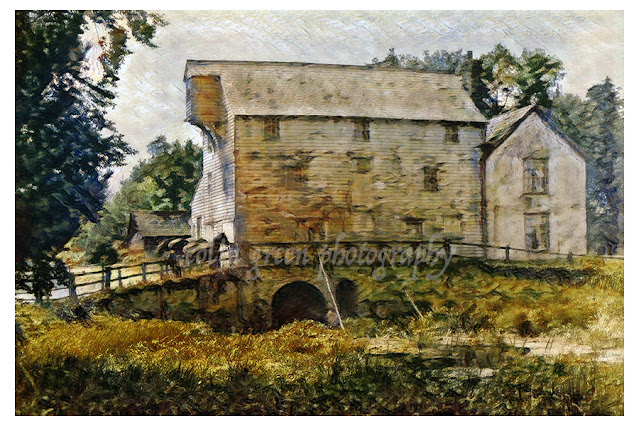The major plus point to my job is that as a long distance lorry driver I get to see many parts of the United Kingdom I wouldn't get the chance to see. Because of this I get to photograph, sketch and create artworks of these places I visit. I recently set about creating a set of bridge pictures and the first 4 can now be seen below and on Clickasnap. They are based on pictures I have taken on my travels, in this case around Scotland and on 1 occasion to Northern Ireland.
There are 4 artworks to see below, they can also be seen full size, resolution and un-watermarked on Clickasnap. Copies can also be purchased if you require, just follow the link under each picture.
Connel Bridge, Oban, Scotland.
Built as a railway crossing over Loch Etive in Western Scotland, the Connel Bridge was opened in August 1903 by the Callander and Oban Railway to carry the Ballachulish Branch Line at a cost of £43000. In 1914 a roadway was added and the bridge was then used by both motor vehicles and rail traffic, however trains had priority and the roadway was closed whenever to vehicles whenever rail transport passed over. This continued until the railway was closed in the late 1960's. The bridge is still single track with traffic lights enforcing the right of way.
Connel Bridge is cantilever in design and has a span of 524 ft, it has a height restriction of 14ft. Near to the bridge are the Falls or Lora, because of the strong tidal flow caused by these the bridge was designed the way it was built. The A828 road runs across the bridge and Oban Airport is a little to the north.
The Forth Bridge
Opened in 1890, the Forth Bridge crossers the Firth of Forth to the east of Edinburgh, Scotland. It is often referred to as the Forth Rail Bridge, but its official name is the Forth Bridge due to it being the first crossing to be constructed connecting North and South Queensferry, the other 2 road crossing opening in 1964 and 2017. The Bridge is a UNESCO world Heritage site and probably the most famous man made construction in Scotland. It was designed by Sir John Fowler and Sir Benjamin Baker, with construction starting in 1882 and at its height involving over 4600 men employed in the building of it.
The Bridge was completed in December 1889, and after tests were completed was officially opened by the Duke of Rothesay on March 4 1890 when he drove home the final gold plated rivet.
Built in a cantilever design, it has a total length of 8094ft, a maximum width of 120ft at the piers, a height of 316ft, and allows a clearance of 150ft at high water mark for ships to pass underneath.
Albert Bridge, Belfast, Northern Ireland
The Albert Bridge was completed in 1890 and crossers the River Lagan near the centre of Belfast, Northern Ireland. Designed by JC Bretland to replace an earlier bridge that had collapsed in 1886, the bridge cost £36,500 (£5200000 in 2022 Value) to build and is named after Prince Albert Victor, the Grandson of Queen Victoria.
Thanks for looking and please take a moment to share and follow me on social media.
All the images remain the copyright of Colin Green.





















































